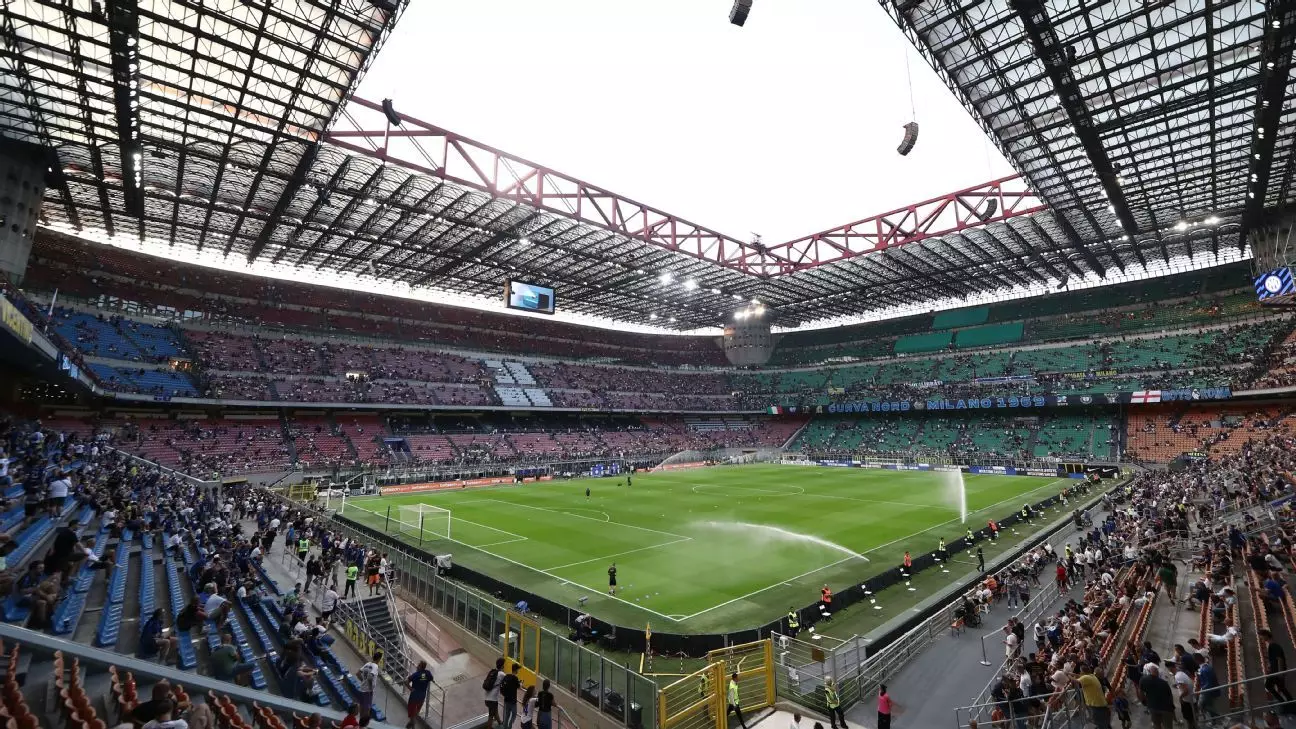The ongoing saga surrounding the San Siro stadium has taken another unexpected turn, as AC Milan and their city rivals, Inter Milan, have officially walked away from plans to renovate the historic venue in favor of a proposal to establish a new joint stadium nearby. This latest decision comes after years of discussions and negotiations, highlighting the complexities involved in stadium development within Italy’s regulatory and cultural landscape.
Mayor Giuseppe Sala’s announcement, following a recent meeting with the clubs, emphasizes the clubs’ realization that maintaining San Siro in its current form would not be economically viable. The rejection of renovation plans signals a shift in mindset for both teams, underlining a collaborative approach that may benefit them amid growing financial competition in European football.
The push for a new stadium is largely driven by the desire for enhanced revenue generation. Both AC Milan and Inter, operating under the leadership of American investment firms, recognize that their financial figures lag significantly behind other major European clubs. A new, state-of-the-art facility promises not only modern conveniences for fans but also increased opportunities for commercial partnerships, events, and revenue streams that a refurbished San Siro may not provide.
In the past, the idea of pursuing separate stadiums appeared feasible for the clubs, but the clamor for unity and collaborative resources has quickly reshaped that narrative. Now, both teams believe that working together on this joint project may lead to better outcomes in an increasingly competitive football landscape.
Despite the renewed focus on a new stadium, significant hurdles remain. The historical nature of San Siro, coupled with strict regulations surrounding cultural heritage, complicates potential developments. The mayor acknowledged the protracted nature of these discussions, signaling the entrenched difficulty of constructing modern sports venues in Italy. This complexity often leads to project delays and frustration among stakeholders.
Inter and Milan’s ambition to acquire the land surrounding the existing stadium reflects their desire to take control over their future and optimize the stadium’s economic potential. However, this acquisition requires a meticulous process—demanding assessments of both the economic viability of the existing infrastructure and the heritage considerations tied to the old venue.
In light of the challenges they face, the clubs are now tasked with establishing a viable framework that addresses the complexities involved in building a new stadium. Mayor Sala’s sentiments underscore the need for patience and thorough planning as both clubs navigate the intricate landscape of Italian football and urban development.
The coming months will likely involve intricate negotiations and community engagement aimed at ensuring the new stadium garners the support of fans and local authorities alike. While the road may be fraught with obstacles, the ambition and unity demonstrated by AC Milan and Inter indicate their commitment to crafting a modern home that enhances their stature in the European football realm. This partnership could prove transformative not just for the clubs, but for the city of Milan as a whole, fostering a future where heritage meets modernity in the beautiful game.

